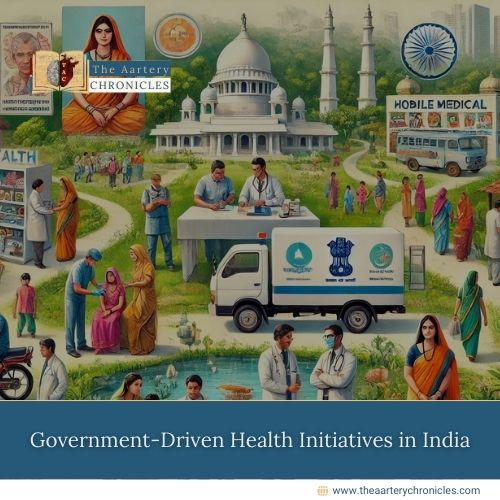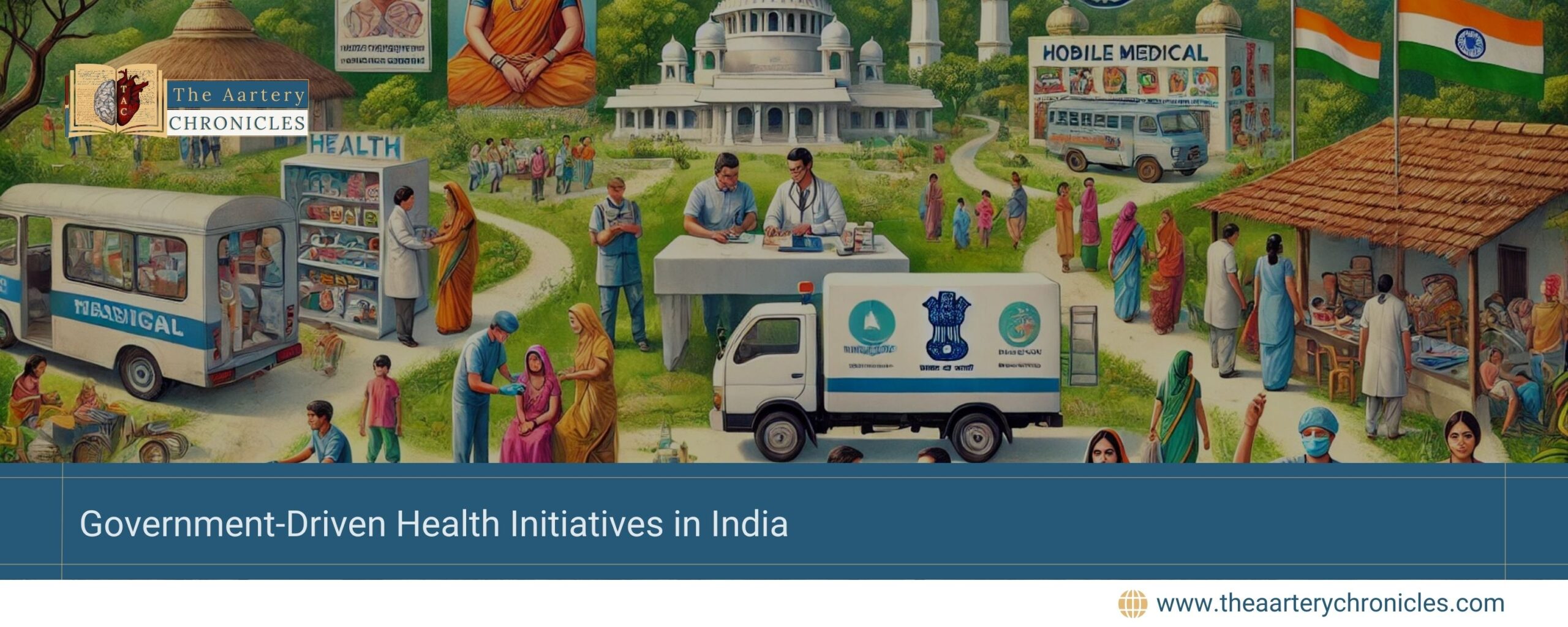

Transforming Health: Key Public Health Initiatives by the Indian Government
Introduction
The Indian government has been at the forefront of implementing comprehensive healthcare initiatives aimed at improving accessibility, affordability, and quality of medical care for its citizens. With a focus on universal health coverage, innovative technology integration, and preventive health measures, the government has introduced several path-breaking schemes and programs. Below is an overview of some significant public health initiatives led by Indian government.
1. Pradhan Mantri Jan Arogya Yojana (AB PM JAY)
AB PM JAY among the largest government-funded health insurance programs globally. Its goal is to offer financial protection for secondary and tertiary healthcare services to economically disadvantaged groups. Key highlights include:
- Financial coverage of up to INR 5 lakh annually per family across both public and private empaneled hospitals in India.
- Focus on reducing catastrophic healthcare expenditure by covering up to 3 days of pre-hospitalization and 15 days of post-hospitalization costs. [1]
2. Health and Wellness Centers (HWCs)
In February 2018, the Government of India unveiled plans to establish 1.5 lakh Health and Wellness Centres (HWCs) by upgrading existing subcentres and primary health centres to enhance primary healthcare delivery near communities.
Key highlights include:
- Offering maternal and child healthcare services
- Addressing non-communicable diseases
- Providing free essential medications and diagnostic support
The HWCs focus on enhancing access, equity, and universality by offering a broader spectrum of services to address the primary healthcare needs of the community. They prioritize health promotion and disease prevention, empowering communities to embrace healthier lifestyles and mitigating the risks of chronic illnesses and related complications. [1]
3. National Digital Health Mission (NDHM)
The NDHM is a pioneering initiative aimed at transforming India’s healthcare ecosystem through digital means. Features include:
- Creation of unique health IDs for individuals.
- Maintenance of electronic health records (EHRs).
- Interoperable platforms for seamless sharing of health data among stakeholders. [2]
4. Mission Indradhanush
Mission Indradhanush is a government led public health initiative that aims to improve immunization coverage among children under 2 years of age and pregnant women. Introduced in 2014, the initiative targets seven life-threatening diseases deemed crucial to reducing high morbidity and mortality rates among children. These diseases include:
- Tetanus
- Tuberculosis
- Diphtheria
- Pertussis (whooping cough)
- Hepatitis B
- Polio
- Meningitis and pneumonia caused by Haemophilus influenzae [3]
5. Pradhan Mantri Swasthya Suraksha Yojana (PMSSY)
This program aims to enhance tertiary healthcare services and create advanced medical facilities in underserved areas. Key components include:
- Establishing additional AIIMS (All India Institute of Medical Sciences) institutions with a primary focus on research and postgraduate education.
- Upgrading existing government medical colleges [4]
6. National Health Mission (NHM)
The National Health Mission (NHM), which includes the National Rural Health Mission (NRHM) and the National Urban Health Mission (NUHM), is dedicated to strengthening public health systems across rural and urban areas. Objectives include:
- Reducing maternal and infant mortality rates
- Controlling communicable and non-communicable diseases
- Promoting reproductive, maternal, newborn, child, and adolescent health (RMNCH+A). [5]
7. E-Sanjeevani
The E-Sanjeevani initiative provides telemedicine services, bridging the gap between patients and doctors, especially in remote areas. The platform offers both doctor-to-patient and doctor-to-doctor consultations, ensuring continuity of care. [6]
8. National Ayush Mission (NAM)
National Ayush Mission seeks to enhance access to affordable and high-quality Ayush healthcare services, promote preventive and holistic care, and integrate Ayush systems into the mainstream public health framework. It also focuses on improving Ayush educational institutions to elevate the quality of education and research in the field. By establishing Ayush Health and Wellness Centers (AHWCs) and initiatives like Ayushman Arogya Mandir, the mission strives to make traditional healthcare more accessible while complementing modern medical approaches [7]
9. Pradhan Mantri Jan Aushadhi Scheme
Branded generic medicines are sold at much higher prices compared to their unbranded counterparts, despite offering the same therapeutic benefits. Considering the prevalence of poverty in the country, ensuring the availability of affordable, high-quality generic medicines would be advantageous for all. To address this, the scheme has established dedicated outlets called Janaushadhi Kendras, which provide generic medicines at reasonable prices. As of November 30, 2023, 10,000 Janaushadhi Kendras are operational across the nation. These stores make essential medicines accessible to all, reducing the financial burden of healthcare. [8]
10. Eat Right India Movement
Launched by the Food Safety and Standards Authority of India (FSSAI), this movement focuses on promoting safe and healthy eating habits. It combines initiatives like:
- Food fortification to address micronutrient deficiencies
- Mass awareness campaigns about balanced diets [5, 9]
11. National Tuberculosis Elimination Program (NTEP)
India aims to achieve tuberculosis elimination by 2025, showcasing a highly ambitious healthcare goal. The NTEP provides free diagnosis and treatment, nutritional support for patients, and active case-finding initiatives. [10]
12. Fit India Movement
The Fit India Movement encourages citizens to adopt healthier lifestyles through regular physical activity and nutritious diets. It involves schools, workplaces, and communities in activities like fitness challenges and health assessments. [5]
Conclusion
The Indian government’s healthcare initiatives reflect a multidimensional approach to addressing the diverse health challenges faced by its population. By leveraging technology, improving infrastructure, and prioritizing preventive care, these programs aim to create a healthier, more equitable society. However, sustained efforts in execution, funding, and public awareness are essential to achieving the envisioned goals.
- About PM-JAY - National Health Authority | GOI
- Press Release:Press Information Bureau
- Mission Indradhanush
- Initiatives to Promote Indian Healthcare Industry
- Steps taken by the Government to reduce burden of Non-Communicable Diseases | Ministry of Health and Family Welfare | GOI
- Ministry of Ayush
- Pradhan Mantri Bhartiya Janaushadhi Pariyojana
- Eat Right India
- National Tuberculosis Elimination Programme









